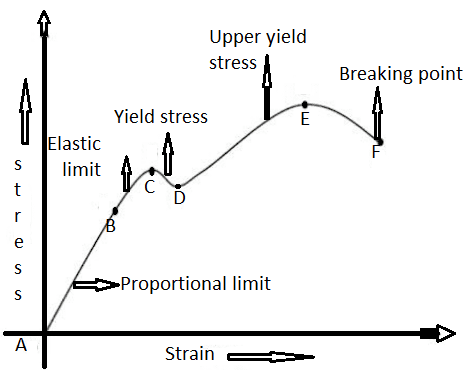Stress-Strain Curve:
Stress Strain Curve: In Stress Strain Curve Stress is the internal force which used to work as resist the applied force, this is used when the load is applied and removed the object internal force resist to original dimensions. Stress is defined as force per unit area of a material.
stress=force/cross-sectional area. its units are Pa.
In Stress strain Curve Strain is explained by when the force is applied to the object it gets into deformation It is measured to the deformation object to the original object.It is the ratio of deformation to the original length.
Strain has no units.
Young Modulus: it is stress to strain ratio.
E=Stress/strain.
units: Pa.
When a metal is placed under tension and compression the measurement can do until the metal gets failure or breaks.
Formula for the calculation of stress and strain are as follows:
σ = P/A
e= dL/L
Where,
- σ = stress
- P = Load
- e = strain
- dL = extension produced in the rod
- L = original length
- A = cross section area
Explanation of Stress Strain Curve:
The given metal subjected to various limits and gets failure at an endpoint.
Proportional limit: Stress is directly proportional to Strain.
Elastic limit: This is known that the material can get it into its original form until the permanent deformation occurs. The point where the elastic behavior ends is called elastic limit.
Yield point: when the metal occurs permanent deformation at that point is called yield point.
Ductile point: At the point where the cross-sectional area of a metal becomes relatively smaller than it’s original area it is called ductile point.
Ultimate point: This is the point that can withstand to maximum load to a given metal is called ultimate point.
Rupture point: this is the point of metal which don’t stand for maximum load and gets break or failure is called failure point or rupture point.
Please Subscribe! and Don’t forget to Follow us on Facebook, Twitter, Linkedin, Instagram and Google Plus.



